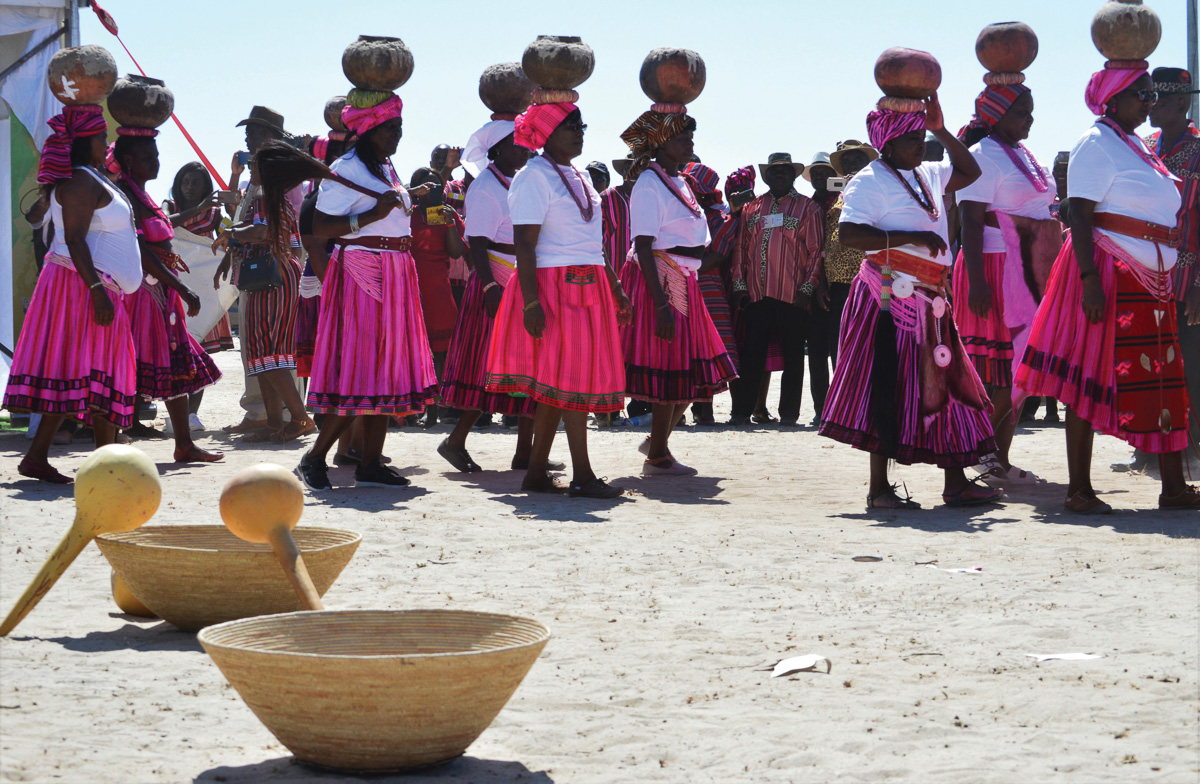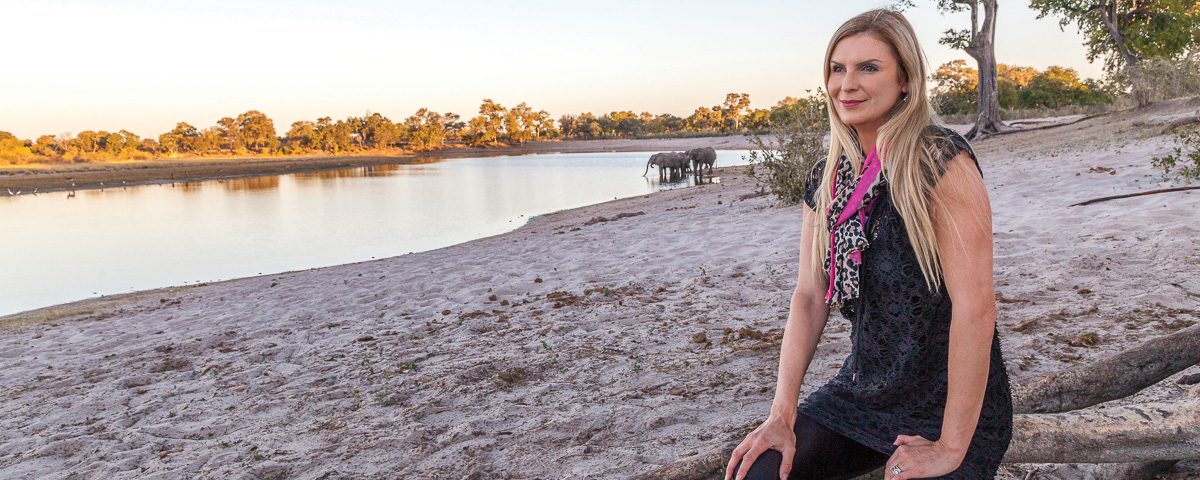
The World’s Most Epic Wine Route
September 4, 2019
Celebrating Aawambo culture with Omagongo
September 5, 2019Meeting new people and unfamiliar destinations are some of the reasons why we travel. This again rang true when I visited Nambwa Tented Lodge and meant so much more than I could have imagined.
Text and Photographs Le Roux van Schalkwyk
African Monarch Lodges with its portfolio of Nambwa Tented Lodge and Kazile Island Lodge recently launched The Sijwa Project. This inspiring initiative aims to create a closed system in which not only the environment surrounding the lodges is protected, but the local community is also included in skill-sharing and empowerment – but more on that later.
Taking my seat on the aeroplane, a familiar face is seated next to me. Although we’ve never met, Michelle McLean is instantly recognisable. Coincidently she is also on her way to Nambwa, and her reason for visiting is similar to mine: to learn more about the inspirational The Sijwa Project.
It is Michelle’s first visit to the Zambezi Region since 1992, shortly after she was crowned Miss Universe. She is in the country for the Miss Namibia 2019 pageant, but as an ambassador for solar energy and education, she’d heard about The Sijwa Project and wanted to learn more about it.
The Sijwa Project has a broad vision of empowering the local community by creating jobs, preserving traditional knowledge, teaching skills and conserving the surrounding environment through a variety of proposed activities. With the highest rate of unemployment in Namibia found in the Zambezi Region, and the inability of those in power to prevent the destruction of our resources in this part of the country, the owners of African Monarch Lodges, Dusty and Tinolla Rodgers, have carefully structured a project that will address these problems through a holistic approach.
This bold project will be multi-faceted and in the end self-sufficient. A sustainable approach has been chosen by African Monarch Lodges which runs throughout, from the newly installed solar plants at each lodge to initiatives empowering the staff and their families. African Monarch Lodges’ plans include setting up a cultural centre where the community can show their traditions to visitors and acquire or develop artisan skills, plus setting up a glass and aluminum recycling plant to turn every waste matter into a sell-able commodity and eventually building a pre-primary school. All the various elements of the project will be interconnected.
FROM TOP LEFT TO BOTTOM RIGHT:
Building the first wall using eco bricks at Sijwa.
Used plastic bottles being filled to be used at The Sijwa Project.
Guide Eustace Libulelo shares his traditional knowledge with Michelle McLean.
Nambwa Tented Lodge is a now run on solar power.
Eva Eichorn is the resident yoga instructor at Nambwa Tented Lodge.
While at Sijwa I was able to see the first wall being built with eco-bricks by lodge staff and some members of the community. By stuffing used plastic bottles full of waste and sand, sturdy bricks are made. Combined with the traditional knowledge of using clay from termite mounds as mortar, walls are built. The hope is that by adding value to used plastic bottles and other discarded plastics, the community will start using the same techniques to build their homes instead of using wood.
A greenhouse is also part of the newly built structures at Sijwa. It will form the centre of a permaculture garden that will provide the two lodges and the surrounding community with delicious fresh vegetables. The dedicated “worm chefs” at both Nambwa and Kazile play an important part in this process. These chefs’ duties, apart from cooking, include making sure that all suitable food waste goes into their worm farm and to keep the worms happy and thriving. The compost generated by the worms is then used for growing crops.
Dusty and Tinolla’s commitment to The Sijwa Project is so strong that when they got married at the lodges earlier this year, they took an unorthodox approach to wedding gifts. Instead of gifts, they asked guests to rather donate money to the project. The donations were enough to set the project in motion and are the reason that I have the privilege to be here.
Being able to engage guests who are passionate about sustainable tourism is only part of the experience when visiting African Monarch Lodges. Experiences surrounding your stay at these establishments in the heart of Bwabwata National Park are what make it special. The measure of detail put into every meal, every activity as well as the delightfully luxurious rooms is a testament to this.
Striving to make your overall experience even better, a permanent yoga instructor is now available at Nambwa. Guests can join yoga sessions in the extraordinary setting of Bwabwata, in full view of its local inhabitants of hippos, elephants and buffalo. Yoga retreats are offered on a regular basis, giving guests the opportunity to concentrate on yoga while in the lap of luxury and in the serene surroundings of the park.
Nambwa is set in paradise and every moment spent there is special: from arriving by boat, navigating the channels of the Kwando with hippos or crocodiles around almost every turn, to the wildlife that thrives on and around the lodge’s grounds. The region is known for its rich and diverse birdlife and excellent sightings are guaranteed by just sitting on the deck in front of your tented accommodation. But it’s not only the small creatures that frequent the lodge. Elephants enter at night to feed on the pods of the camelthorn trees and the fruits of the marula trees. You will also realise that the wooden walkways were built so high because elephants don’t like bumping their heads when passing through.
This article was first published in the Spring 2019 issue of Travel News Namibia.



1 Comment
this sites is good